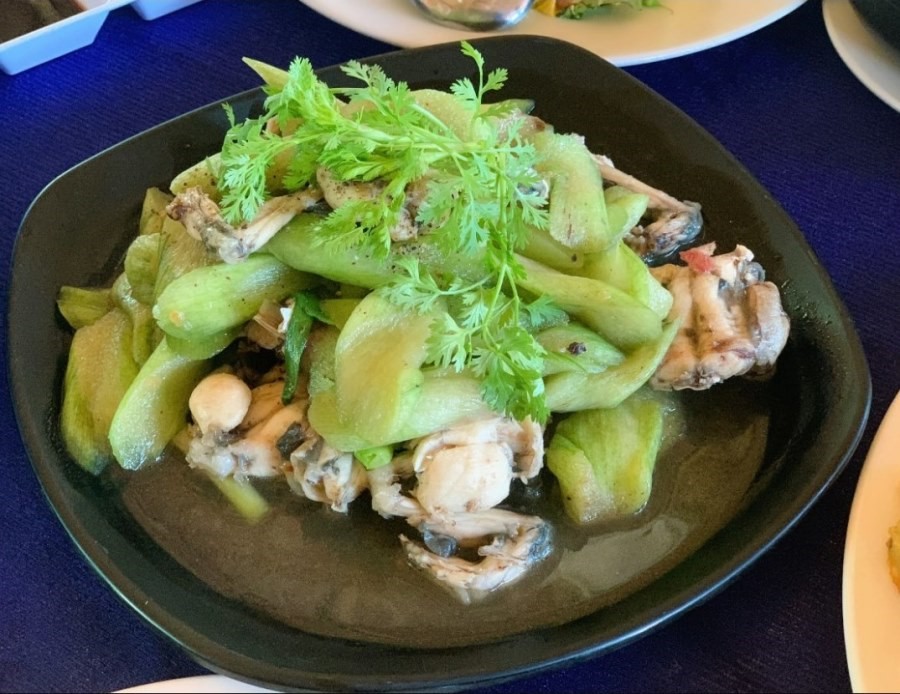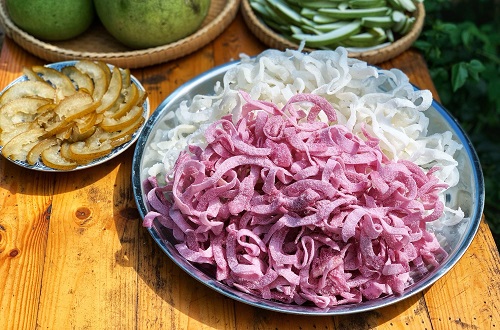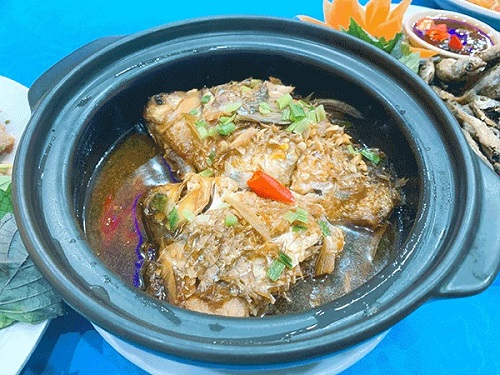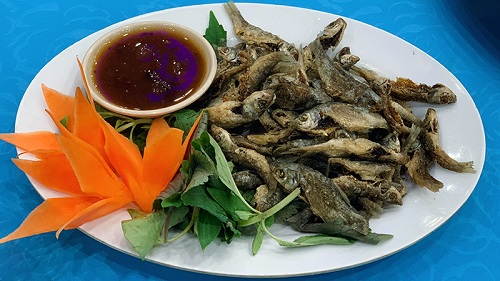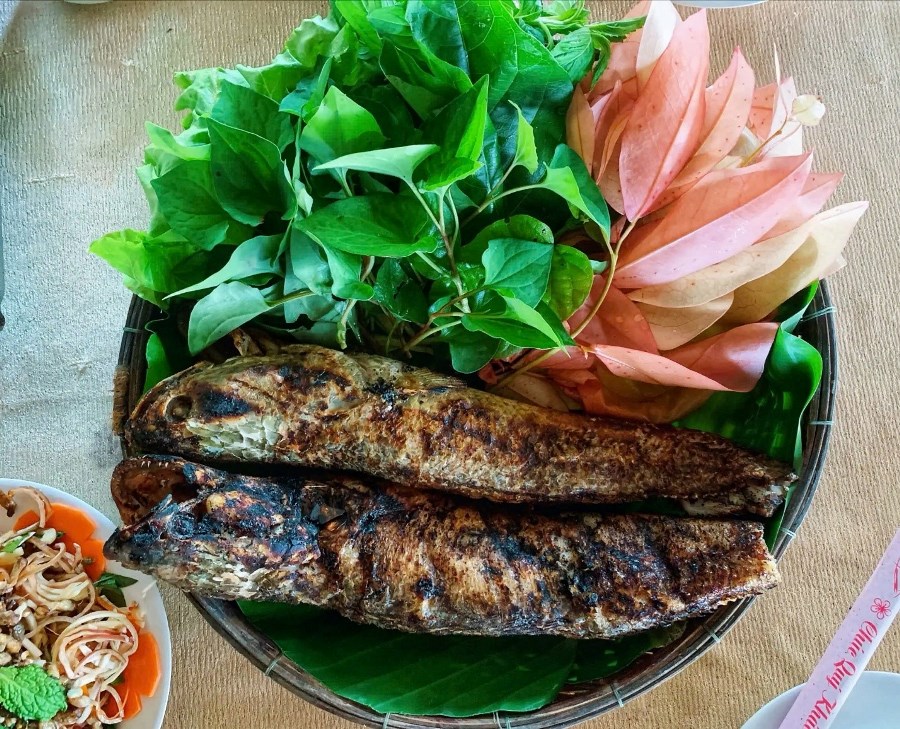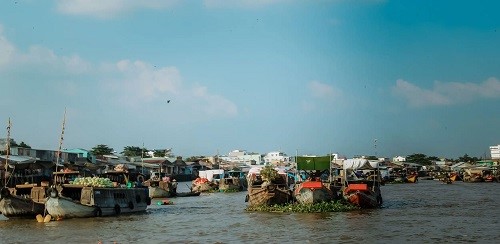
Floating Market: Formation and Development Processes
So far, no official document has confirmed precisely when the floating market first appeared. It is generally understood that by the end of the 17th century, the land on both banks of the Tien River had mainly been cleared, leading to the establishment of various towns and districts. As a result, the population began to concentrate and settle in these areas. This development gave rise to a flourishing market network. Notable markets, such as Long Ho Market and Hung Loi Market in Dinh Tuong, became bustling hubs, with numerous boats docking to buy and sell goods and food. This marked the beginning of the floating market.
After occupying Cochinchina, the French launched an extensive exploitation project on the western bank of the Hau River. This project involved digging canals, establishing markets, and constructing roads, all creating favorable conditions for commercial activities. The Xang Xa No Canal, which connects Can Tho and Rach Gia, was completed between 1901 and 1903, marking the beginning of a period of growth in agriculture, industry, and commerce. Consequently, the Mekong Delta's rice, fruits, and vegetables became widely traded goods and were increasingly exported to foreign countries.
Cai Rang market area in Can Tho is a bustling rice market known for its strength in the rice milling industry and is second only to Cho Lon.
Cai Rang Market, located by the rice mill, thrived on the shore and along the river due to its strategic position connecting Saigon and Can Tho to Ca Mau and Rach Gia. In the mid-20th century, numerous floating houses lined both sides of the Cai Rang and Can Tho canals. The Hoa people owned these floating homes and operated grocery stores from their boats. A bustling river market developed alongside hundreds of boats and ships trading continuously day and night. Vietnamese boats sold fruits and vegetables, Chinese boats offered groceries, and Khmer merchant boats sold Ca Rang Ong Tao stoves.
About 30 kilometers south of Cai Rang, the Can Tho's Nga Bay (Phung Hiep) canal cluster was completed in 1915. A year later, the district capital of Phung Hiep was moved from Rach Goi to this location. The road from Cai Rang was gradually constructed to Nga Bay, making the area a prosperous market that expanded along the road and down to the seven river branches. Passenger boats, agricultural vessels, and merchants from various places gathered creating a bustling scene day and night. As a result, the Nga Bay market evolved into the large-scale Nga Bay floating market.
The canal construction progressed from Nga Bay to the Quan Lo canal, connecting Phung Hiep through Soc Trang, Rach Gia, Bac Lieu, and Ca Mau, ultimately reaching a location in Long My district. Here, five canals were cut and merged, creating the center of Nga Nam, just over 30 kilometers from the heart of Nga Bay. As soon as this canal was completed, the Nga Nam market emerged, quickly growing into a bustling metropolis.
The birth of the Cai Rang, Nga Bay, and Nga Nam floating markets marks a significant advancement in developing large-scale river market groups, with a trading volume far surpassing that of earlier markets.
As trade expanded, many medium-sized floating markets emerged, including the Vinh Thuan floating market in Kien Giang, the Ngan Dua floating market in Bac Lieu, and the An Huu floating market in Cai Be, Tien Giang.
The Mekong Delta floating markets began to take shape around the early 19th century, primarily along the banks of the Tien River. The formation and establishment of these markets continued into the early 20th century, particularly on the western bank of the Hau River, primarily in the Can Tho area.
The development of floating markets truly gained momentum after the Reunification Day on April 30, 1975.
Characteristics of floating markets
The first characteristic of floating markets is using a pole to advertise goods. Boat owners hang a pole in front of the bow of their boats, which serves as a signal to attract customers. This method, known as “bẹo hàng,” is a unique form of marketing and advertising that originated early in floating markets.
The second characteristic emphasizes "trust" in buying and selling activities. Agreements to buy and sell goods, even in large quantities, are typically made verbally, without written contracts. Both parties honor these agreements with great respect.
The third characteristic is that transactions in floating markets are conducted on a "cash on delivery" basis. There is no practice of buying or selling on credit, and once a purchase is made, customers and sellers do not exchange or return goods. After each transaction, everyone retracts their pole and leaves the boat.
Communication culture is a defining characteristic of the floating market. Most vendors come from all over the country to set up shop and make a living. For hundreds of years, they have developed a custom of "buying with friends and selling with partners," fostering long-term relationships that are now cultural values. These values include solidarity, mutual respect, and assistance.
Boats anchored for extended periods often develop a neighborly bond, turning strangers into friends. They readily help one another; for instance, if a ship runs aground or has engine trouble, others will jump into the river to assist. In the face of strong waves and winds, when a boat is in danger of sinking, neighboring boats often come together to bail out the water. Additionally, if someone on a boat falls ill or passes away, many others gather to provide support and care.
The role of floating markets
Floating markets' primary function is facilitating trade by buying, selling, and exchanging goods. These markets are crucial in distributing agricultural products in the region, providing numerous jobs for residents, and improving their quality of life. Floating markets have evolved over centuries, reflecting the river environment and the trading customs of the local people.
They serve as a meeting point between agricultural goods, handicrafts, and industrial products, acting as a bridge connecting urban and rural areas. Floating markets also foster the growth of trade, services, and tourism in the region.
The Mekong Delta floating markets serve a cultural role by showcasing the typical functions of buying and selling and unique trading methods and activities.
People from various regions gather here to exchange news and business experiences. They come to this market to gather information brought by trading boats from distant places. Once the market concludes, they return home with beautiful and valuable goods from other areas. In this way, the floating market also serves as a hub for "transmitting culture" across the region, from cities to remote villages, fostering the vitality of the Southern River civilization. Many young men and women come here in search of life partners. Through folk songs and lyrics, they connect gently yet steadfastly.
The Southern rivers are vast yet intimate, characterized by the gentle and honest Ao Ba Ba folk songs and the rustic charm of rural markets nestled along peaceful waterways. These locations have quickly become popular gathering spots for activities, entertainment, and tourism, attracting visitors from all over.
Tourism plays a significant role in floating markets, particularly in the Mekong Delta. Floating market tourism began in the 1980s when domestic and international tourists sought to reconnect with nature and learn about the lives of local merchants and the products from this newly explored region.
This type of tourism contributes to the area's socio-economic development and enhances the Vietnamese tourism industry by generating revenue and diversifying tourism offerings. The growth of floating market tourism is generally community-oriented and viewed as a positive development.
A few residents participate in tourism by providing transportation for visitors, operating boats, and acting as tour guides, thus benefiting from this industry. The transportation options available in floating markets are pretty diverse, and the quality of the boats, especially at the Cai Rang and Cai Be floating markets, is good.
Access to these floating markets is relatively easy, as paved roads connect most with fairly wide lanes.
The demand for buying and selling goods on the river has decreased significantly compared to the past, primarily due to the development of roads and transportation methods, which have changed how people shop. This shift has also impacted culture and tourism.
To address these changes, a potential solution is to transform the floating market into a model that preserves its unique cultural values while promoting tourism. Focusing on environmental issues, food hygiene and safety, price control, and improving vendor communication is essential.
By doing so, the floating market could become a miniature museum, preserving the memories and cultural features of the Mekong Delta's communities while serving as a destination for cultural tourism.
Source: Cantho News - Translated by Hoang Dat








